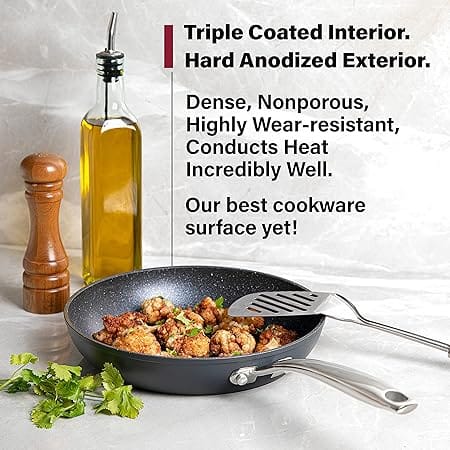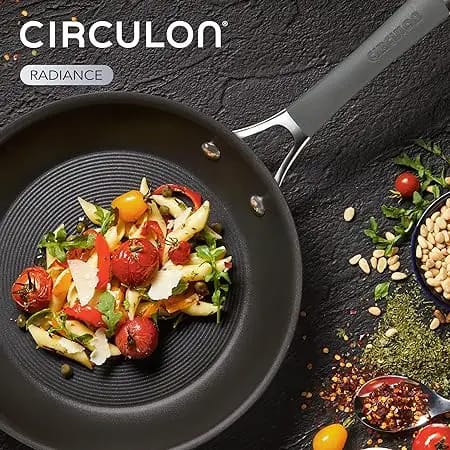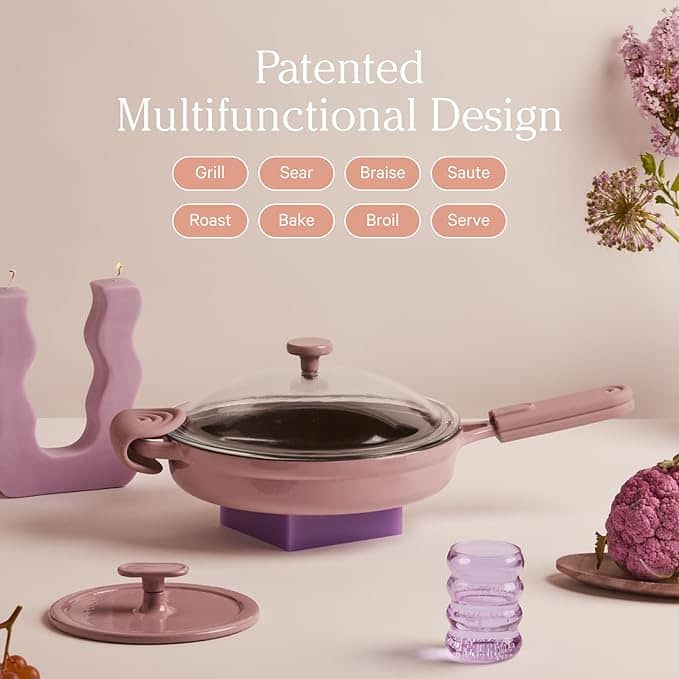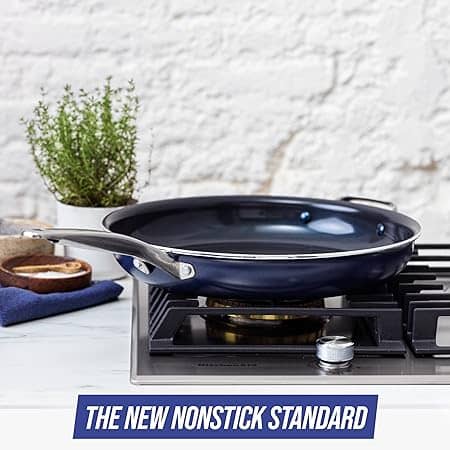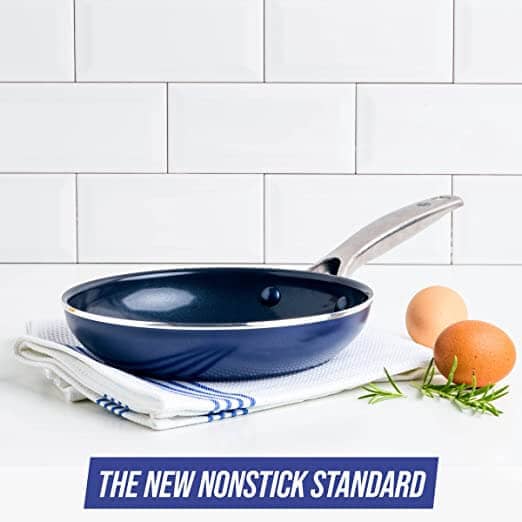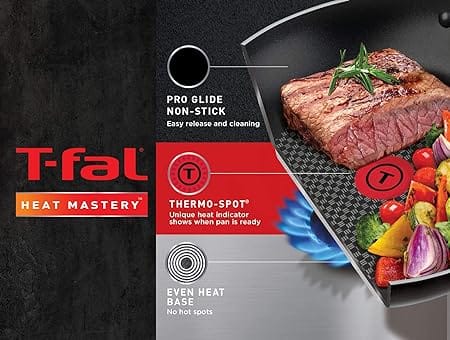Granite Pan Reviews 2024: Top Picks Best Guide (2024 Update)
Granite Pans: Your Guide to a Non-Stick Revolution
For home cooks looking to elevate their culinary game, a granite pan can be a game-changer. These innovative pans boast a non-stick surface that rivals traditional options while offering a host of additional benefits. But its are truly all they’re cracked up to be? This comprehensive guide will delve into the world of granite pans, exploring their advantages, addressing common concerns, and providing tips for optimal usage.
Introduction
It, also referred to as granite stone pans or non-stick granite pans, have become increasingly popular in recent years. They feature a unique coating derived from natural minerals and are often reinforced with a diamond or ceramic layer. This combination creates an exceptionally non-stick surface that allows for healthy cooking with minimal oil.
But unlike traditional non-stick pans that may contain harmful chemicals like PFOA, It are generally considered PFOA-free and safer for use at high temperatures. Let’s delve deeper into the reasons why you might want to consider adding a this pan to your cookware collection.
Why Choose a Granite Pan? Unveiling the Advantages
It offer a compelling array of benefits that set them apart from traditional cookware. Here’s a closer look at some of the key advantages:
Superior Non-Stick Performance:
One of the most significant advantages of it is their exceptional non-stick capability. The mineral-based coating allows food to slide effortlessly across the surface, making them ideal for everything from delicate crepes and pancakes to fried eggs and fish. This translates to healthier cooking with minimal oil required, reducing fat intake in your meals.
Durability Built to Last:
These are built to endure the rigors of everyday cooking. The mineral-based coating is often significantly more scratch-resistant compared to traditional non-stick pans. This translates to longer pan lifespans, saving you money on replacements in the long run. Unlike traditional non-stick coatings that can easily chip or flake, granite pans can withstand even metal utensils (with caution) without compromising the non-stick properties.
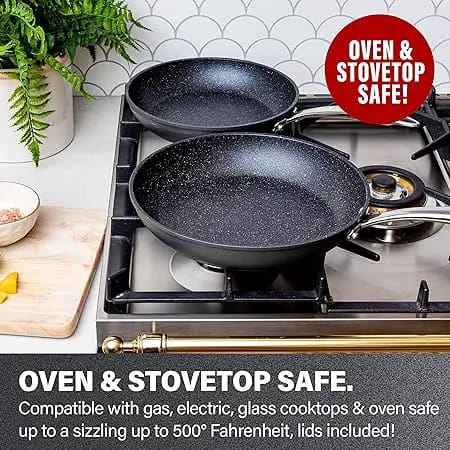
Here’s a table to illustrate the typical lifespan of different pan types:
Pan Type | Average Lifespan |
Traditional Non-Stick Pans | 1-3 years |
Stainless Steel Pans | Up to a lifetime with proper care |
Granite Pans | 5-10 years |
As you can see, It offer a significant advantage in terms of durability compared to traditional non-stick options.
Easy Cleaning – A Breeze to Maintain:
The non-stick properties of It extend to effortless cleaning. Food residue wipes away easily with minimal scrubbing, saving you time and effort. Most Of it pans are dishwasher-safe, adding another layer of convenience to your post-meal routine.
Safe for Most Heat Sources:
These are compatible with most stovetops, including gas, electric, and even glass cooktops (certain restrictions may apply, so be sure to check the manufacturer’s instructions). This versatility allows you to use your pan across various cooking methods without limitations.
Optimum Usage: Getting the Most Out of Your Granite Pan
Now that you’re familiar with the benefits and considerations surrounding granite pans, let’s explore how to use them effectively for optimal performance:
Seasoning Your Granite Pan (Maximizing Non-Stick Properties)
Similar to cast iron pans, some pans benefit from a seasoning process before first use. This helps create a protective layer that enhances the pan’s non-stick properties.
Here’s a step-by-step guide on seasoning a new pan:
- Wash the pan thoroughly with warm soapy water and dry it completely.
- Apply a thin layer of cooking oil (coconut oil or grapeseed oil are good options) to the entire pan surface, including the sides.
- Place the pan upside down in a preheated oven at around 350°F (175°C) for 30 minutes.
- Turn off the oven and let the pan cool down completely inside.
This seasoning process can be repeated periodically to maintain the pan’s non-stick performance.
Cooking Tips and Techniques for Granite Pans (Heat Control and Proper Use)
It excel at even heat distribution, making them perfect for searing, sauteing, and frying. However, to maximize their lifespan and effectiveness, here are some handy tips:
- Always preheat your pan over medium heat for a few minutes before adding oil. This allows for even cooking and prevents food from sticking.
- Avoid using extremely high heat settings. While it can withstand high temperatures, very high heat can potentially damage the coating over time.
- Use a moderate amount of oil for cooking. The non-stick properties of this pans allow you to use less oil compared to traditional cookware.
- Let the pan cool slightly before cleaning. Avoid plunging a hot pan into cold water, as this can cause the pan to warp.
By following these simple techniques, you’ll ensure enjoyable cooking experiences with your pan.
Cleaning and Maintenance (Maintaining Peak Performance)
The good news is that cleaning pans is a breeze. Here’s how to keep your pan in top shape:
- Let the pan cool completely before cleaning.
- Wash the pan with warm soapy water and a soft sponge or dishcloth. Avoid abrasive scrubbing pads that can damage the coating.
- For stubborn food residue, you can use a sprinkle of baking soda and a gentle scrub.
- Most granite pans are dishwasher safe, but it’s always recommended to consult the manufacturer’s instructions for specific care guidelines.
By following these simple cleaning practices, you’ll extend the lifespan of your pan and ensure it continues to deliver exceptional non-stick performance for years to come.
Granite Pans vs Other Cookware: Making an Informed Choice
With an array of cookware options available, it’s natural to wonder how granite pans stack up against the competition. Let’s explore how granite pans compare to two other popular choices: traditional non-stick pans and stainless steel pans.
-
Granite Pans vs Traditional Non-Stick Pans (Highlighting Longevity and Safety)
Traditional non-stick pans were once a popular choice for their convenience. However, concerns regarding PFOA and potential health risks have led many home cooks to seek safer alternatives. Granite pans address this concern by offering a PFOA-free non-stick surface. Additionally, it boast superior durability compared to traditional non-stick options. While traditional non-stick coatings can chip or flake over time, it are generally more resilient and can last for years with proper care.
-
Stainless Steel Pans vs. Granite Pans (Pros and Cons of Each)
Stainless steel pans are known for their exceptional durability and versatility. They can withstand high heat and are compatible with all stovetops, including induction. However, stainless steel does not offer the same level of non-stick performance as granite pans. Food can easily stick to stainless steel, requiring more oil for cooking. On the other hand, stainless steel pans can be scrubbed and deglazed more aggressively compared to granite pans, making them potentially easier to clean for certain types of cooking.
-
Are Granite Pans Right for You? (Factors to Consider When Choosing Cookware)
Ultimately, the best cookware choice depends on your individual needs and cooking preferences. Here are some factors to consider:
- Cooking style: If you frequently cook foods that tend to stick, such as eggs or fish, a granite pan’s non-stick properties can be a major advantage.
- Health concerns: If you’re concerned about PFOA and prioritize healthy cooking, granite pans offer a safe alternative to traditional non-stick options.
- Durability: If you’re looking for a pan that will last for years with proper care, granite pans are a strong contender.
- Maintenance: If ease of cleaning is a top priority, stainless steel pans might be a better choice due to their ability to handle aggressive scrubbing.
By considering these factors, you can make an informed decision about whether granite pans are the right fit for your kitchen.
Where to Buy Granite Pans? (Include a Buying Guide with Factors to Consider)
Granite pans are available from a variety of retailers, both online and in brick-and-mortar stores. Here’s a quick buying guide to help you choose the perfect pan:
- Size: Consider the size of your cooking surface and the types of dishes you typically prepare.
- Material: Look for pans with a PFOA-free mineral-based coating.
- Compatibility: Ensure the pan is compatible with your stovetop (especially important for induction cooktops).
- Brand reputation: Opt for pans from reputable brands that prioritize quality and safety.
- Price: It can range in price depending on size, brand, and features. Set a budget and look for pans that offer good value for your money.
Granite Pan FAQs: Answering Your Burning Questions
Q: Is there a difference between granite pans and granite stone pans?
A: No, the terms “granite pan” and “granite stone pan” are generally used interchangeably. Both refer to pans with a mineral-based coating that offers non-stick properties.
Q: Can I use granite pans in the oven?
A: Generally yes, most granite pans are oven-safe up to a certain temperature (often around 450°F to 500°F). Always double-check the manufacturer’s instructions for your specific pan to confirm the maximum oven-safe temperature.
Q: What if my food sticks to my granite pan?
A: There are a few reasons why food might stick to your granite pan:
- Insufficient preheating: Ensure you preheat the pan over medium heat for a few minutes before adding oil and food.
- Not enough oil: While granite pans are non-stick, using a small amount of oil can still help prevent sticking, especially for delicate foods.
- Using metal utensils: Opt for silicone or wooden utensils to avoid scratching the pan’s surface, which can compromise its non-stick properties.
Q: How long should I wait before washing my granite pan?
A: It’s best to let your granite pan cool down slightly before washing. Avoid plunging a hot pan into cold water, as this can cause the pan to warp. Letting the pan cool for a few minutes allows for easier cleaning and prevents thermal shock.
Q: Are there any health risks associated with granite pans?
A: Look for PFOA-free granite pans from reputable brands. PFOA is a chemical that has been linked to health concerns, but it has largely been phased out of cookware manufacturing. Reputable manufacturers will clearly state that their pans are PFOA-free. Additionally, granite pan coatings are typically cured at high temperatures, making them unlikely to leach harmful chemicals into your food at normal cooking temperatures.
Q: Can I use granite pans on a glass-top stove?
A: Most granite pans are suitable for glass-top stoves. However, it’s always recommended to check the manufacturer’s instructions to ensure compatibility. Look for pans specifically labeled as safe for glass-top stoves.
Q: What are some alternatives to granite pans?
- Ceramic pans: Similar non-stick properties to granite pans, but may require more delicate care.
- Cast iron pans: Highly durable and versatile, but require seasoning and proper care for optimal performance. Not naturally non-stick.
- Stainless steel pans: Classic choice, offering durability and versatility. Not non-stick, but can be good for searing and achieving a fond.
Conclusion: Granite Pans – A Worthy Investment
It offer a compelling combination of non-stick performance, durability, and safety. They are a versatile option for home cooks looking to elevate their culinary game. With proper care and seasoning, It can become a mainstay in your kitchen, helping you create delicious and healthy meals for years to come.
So, are you ready to experience the non-stick revolution with granite pans? Consider the factors mentioned above and do your research to find a high-quality pan from a reputable brand. With the right pan and a little know-how, you’ll be whipping up restaurant-quality dishes in no time.
Happy Cooking!

